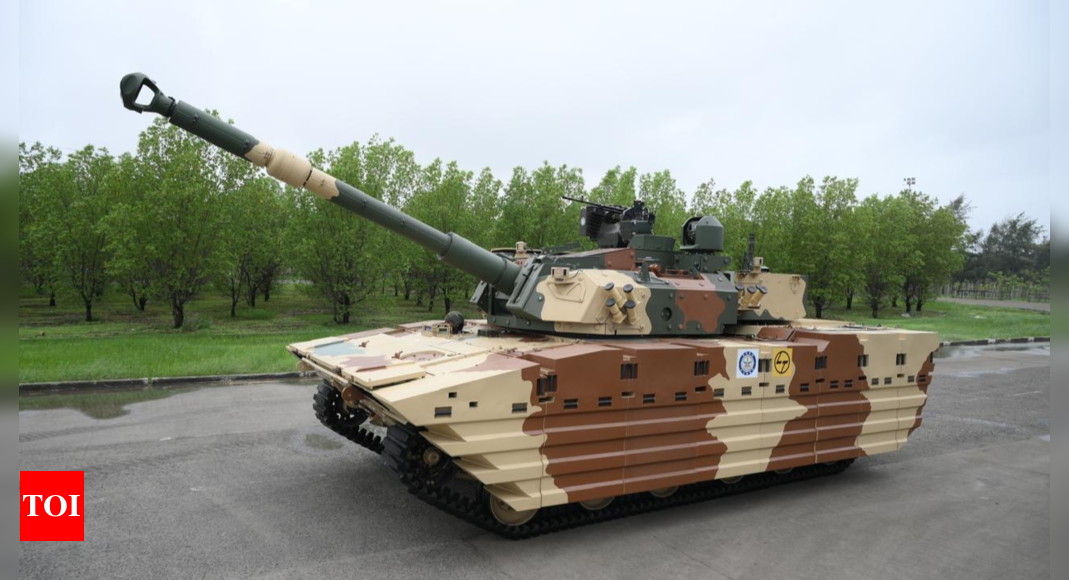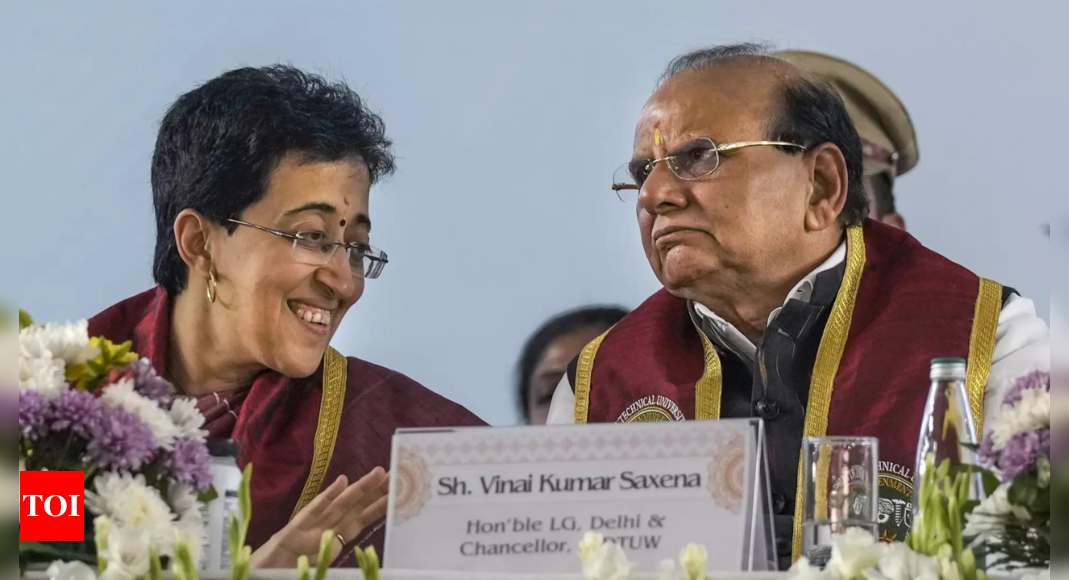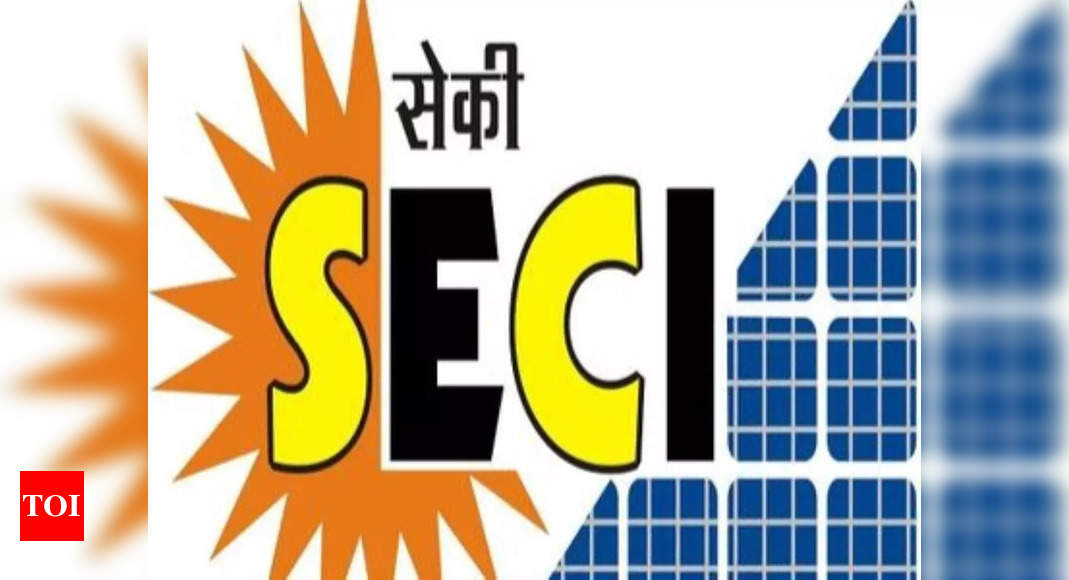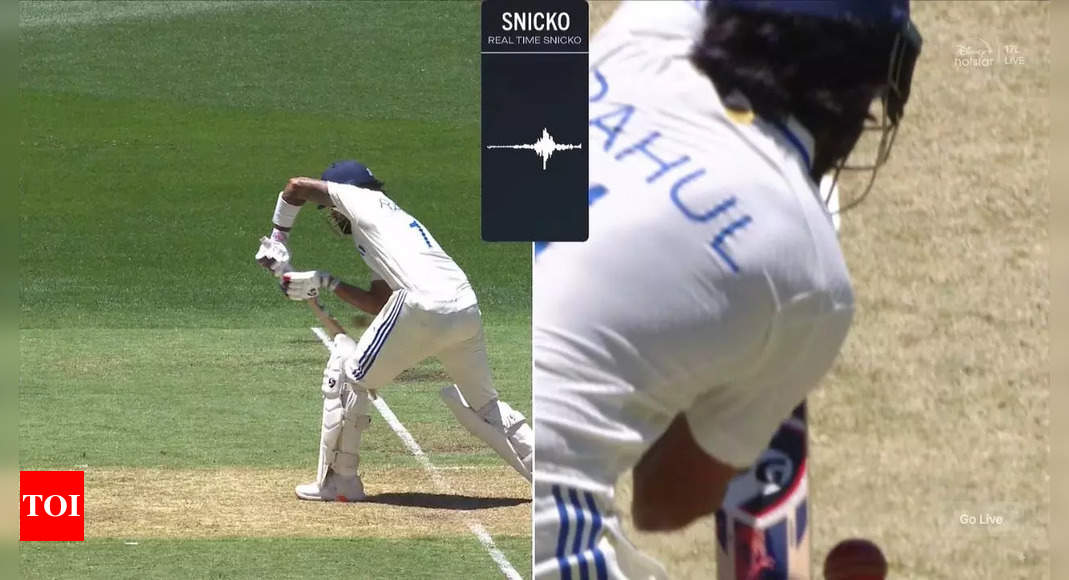
NEW DELHI: India’s very own light tank, designed under ‘Project Zorawar‘ for high-altitude warfare in places like eastern Ladakh and Arunachal Pradesh, is expected to be ready for induction in the Army by 2027.
The light tanks, developed by DRDO and private sector company L&T, will have to undergo a series of summer and winter trials, including in deserts and high-altitude areas, over the next two to three years before the entire acquisition, production and induction process can actually begin.
The need for such tanks, each weighing less than 25 tonnes with a high power-to-weight ratio as well as superior firepower and protection, has been driven home by the continuing military confrontation with China in eastern Ladakh, which is into its fifth year now.
Reviewing the first prototype of the light tank at Hazira in Gujarat on Saturday, DRDO chairperson Dr Samir Kamat told journalists it was “a momentous day” to see it in action. The prototype, designed and developed in a short period of 24 to 30 months, is an example of what can be achieved when the DRDO and industry work together. The light tank should be ready for induction, after “developmental” and user (Army) trials”, by 2027, he added.
The Army’s case for 354 such tanks, which will cost an estimated Rs 17,500 crore, was given preliminary approval or “acceptance of necessity” by the Rajnath Singh-led Defence Acquisitions Council in December 2022.
While 59 of these light tanks are reserved for DRDO, which has L&T as the “lead system integrator”, the rest 295 are to be manufactured under the government-funded design and development ‘Make-1’ category, which is open to companies other than L&T as well, as was first reported by TOI.
A DRDO official said the agile and versatile light tank will be capable of operations in the “most challenging environment in the world with minimal logistic support”, including high-altitude areas along the northern borders with China.
“Due to its lighter weight, the tank has high strategic mobility. It can be transported by air and is capable of amphibious operations. It can fire at high angles of elevation and perform the role of limited artillery,” he added.
The over 11-lakh strong Army had managed to deploy some of its heavier Russian-origin T-90S and T-72 main-battle tanks (40 to 50 tonne each) in eastern Ladakh after the confrontation with China erupted in May 2020. The PLA also inducted a large number of technologically advanced mix of medium and light tanks, including the new third-generation Type-15 ones.
The T-90S and T-72 tanks, however, are geared for operations in plains and deserts, and thereby have limitations in high-altitude areas ranging from 11,000 to almost 17,000-feet. “Consequently, the need arose for light tanks that are more manoeuvrable and operationally flexible in mountains,” an officer said.
The Army wants the new light tanks to also incorporate niche technologies like AI, drone integration, active protection system and high degree of situational awareness, among others.
The light tanks, developed by DRDO and private sector company L&T, will have to undergo a series of summer and winter trials, including in deserts and high-altitude areas, over the next two to three years before the entire acquisition, production and induction process can actually begin.
The need for such tanks, each weighing less than 25 tonnes with a high power-to-weight ratio as well as superior firepower and protection, has been driven home by the continuing military confrontation with China in eastern Ladakh, which is into its fifth year now.
Reviewing the first prototype of the light tank at Hazira in Gujarat on Saturday, DRDO chairperson Dr Samir Kamat told journalists it was “a momentous day” to see it in action. The prototype, designed and developed in a short period of 24 to 30 months, is an example of what can be achieved when the DRDO and industry work together. The light tank should be ready for induction, after “developmental” and user (Army) trials”, by 2027, he added.
The Army’s case for 354 such tanks, which will cost an estimated Rs 17,500 crore, was given preliminary approval or “acceptance of necessity” by the Rajnath Singh-led Defence Acquisitions Council in December 2022.
While 59 of these light tanks are reserved for DRDO, which has L&T as the “lead system integrator”, the rest 295 are to be manufactured under the government-funded design and development ‘Make-1’ category, which is open to companies other than L&T as well, as was first reported by TOI.
A DRDO official said the agile and versatile light tank will be capable of operations in the “most challenging environment in the world with minimal logistic support”, including high-altitude areas along the northern borders with China.
“Due to its lighter weight, the tank has high strategic mobility. It can be transported by air and is capable of amphibious operations. It can fire at high angles of elevation and perform the role of limited artillery,” he added.
The over 11-lakh strong Army had managed to deploy some of its heavier Russian-origin T-90S and T-72 main-battle tanks (40 to 50 tonne each) in eastern Ladakh after the confrontation with China erupted in May 2020. The PLA also inducted a large number of technologically advanced mix of medium and light tanks, including the new third-generation Type-15 ones.
The T-90S and T-72 tanks, however, are geared for operations in plains and deserts, and thereby have limitations in high-altitude areas ranging from 11,000 to almost 17,000-feet. “Consequently, the need arose for light tanks that are more manoeuvrable and operationally flexible in mountains,” an officer said.
The Army wants the new light tanks to also incorporate niche technologies like AI, drone integration, active protection system and high degree of situational awareness, among others.







